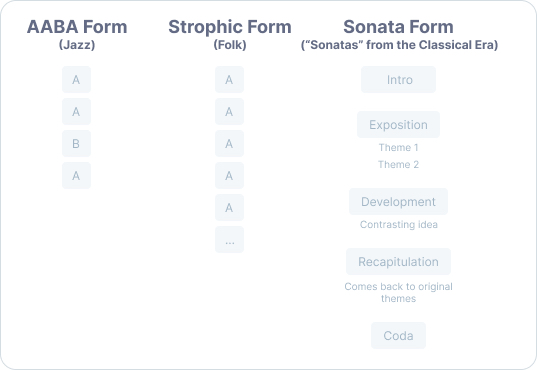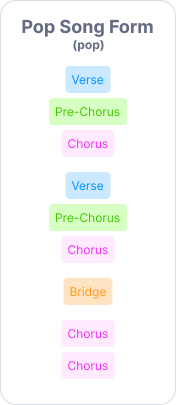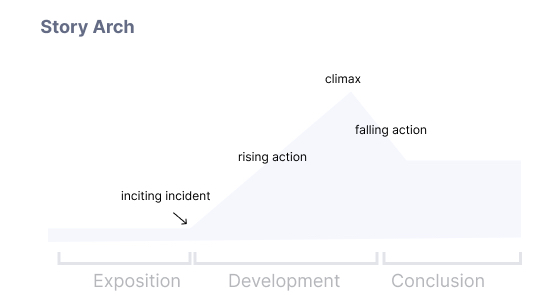Did Taylor Swift Kill Pop? | What is pop song form and are we done with it?

To a piano / voice teacher like me, Taylor Swift is a golden goose of song choice. Taylor's prolific songwriting career has provided a constant stream of new material for teaching song form, chord changes, and self-accompaniment. Every time Taylor puts out a new album, I am ready with open ears and a pencil to transcribe the whole thing because I know my students can't wait to learn these new songs. With all the analysis, I have naturally noticed patterns in Taylor's writing - from gravitation toward certain progressions, to obvious influences of each album cycle. But with the release of "Midnights," we may be witnessing a very interesting shift in Taylor Swift's songwriting, and maybe even pop song form itself.
What is song form?
Song form, simply, is the way that the different sections of a piece of music are laid out. Song form has existed as long as music has existed. Song form exists in all genres. Depending on the genre, the sections are classified differently, but whether you're analyzing a classical piece or a folk tune, the concept of song form is the same.
In classical music, there are many types of pieces, each era giving us a plethora of 'song forms.' Some forms are quite basic, while others are incredibly intricate, containing sections within sections. A good example of this is the "Sonata.(link)" Sonatas are broken down into 3 large sections or "movements,' and within each movement there are several smaller sections.
In jazz, the form is much simpler, leaving room for improvisation within the simple form. In a jazz tune, letters are used to mark sections of a song - A, B, C, etc. The sections don't usually go much passed C or D, keeping the form as simple as possible. One common jazz song form (link) is AABA - the A sections all share 1 melody (with slight variations), and the B section has a contrasting melody and often a fresh chord progression.
In folk, you'll often here what's called "Strophic" song form, which is essentially an A section or a Verse repeated throughout the song (usually with a one-line "hook." This is appropriate for folk music because it gives the songwriter a lot of room to tell the story, each verse being brand new lyrics.

If you are interested in learning music check out our Music Lessons in Denton.
What is pop song form?
Pop song form, as it is today, uses verses, pre-choruses, choruses, and bridges to construct a compelling story arch. Technically these sections could be labled as A, B, C etc, but with the development of the song pop form, these section titles evolved to be more descriptive of their purpose. Pop songs are generally constructed something like this:
-
Verse
-
Pre-chorus
-
Chorus
-
Verse
-
Pre-chorus
-
Chorus
-
Bridge
-
Chorus
Pop song form can vary in many ways. Pre-Choruses don't always exist within a pop song, and neither to Bridges. Some pop songs are just verses and choruses, if the feeling of the song calls for a simpler song form. Choruses are often doubled, especially the last time through the song, and Bridges are often replaced by an instrumental solo or synth hook.
Pop song form as well as pop itself originated from jazz with its simple song forms, but eventually evolved into what it is today. Although this song form slowly evolved from jazz form over time, The Beatles have been credited with officially creating Pop Song Form as it is today.

What are verses in a song?
Pop songs often start with a verse, which are designed to tell the story and give background information. The verse is the only song section that repeats with new lyrics but unchanged melody and chords. After the first chorus, the verse returns giving the listener a melody they recognize but new lyrics, allowing the songwriter to develop the story more and give more context.
What is a Pre-chorus?
A well-written pre-chorus paves the way for the chorus by building tension and creating a "lift." An effective pre-chorus will have the listener ready to pump their fist once the chorus hits.
Although pre-choruses are not always used, they are an incredibly helpful tool for making the chorus more effective.
What is a chorus in a pop song?
The Chorus of a pop song is meant to be not only the [recurring] climax of the song, but in message, it should also be the thesis of the song. A Chorus repeats throughout the song with unchanging lyrics, melody, and chords.
Although the other elements of the chorus don't change, the arrangement underneath often does. The last chorus in the song will often be much "bigger" than the others, giving one grand finale climax. Other times the arranger will treat one of the Choruses as a "breakdown" section, stripping away some of the musical elements to highlight the melody or lyrics. A good example of this is in Taylor's song "Karma" - after the Bridge, the Chorus is treated in this "break-down" fashion (2:10), followed by an extra powerful chorus. This is not only an effective tool in itself, but also a good way to make the following chorus feel powerful in comparison.
What is a bridge in a pop song?
The bridge of a song introduces and new idea, usually reflected in the music as well as the lyrics. An effective device for writing a bridge is to introduce a new perspective on the subject, giving the whole story a "twist" or another point of view. This new context can be whatever the writer wants it to be. It's a place for the songwriter to stretch the imagination and take the listener to a new place. In Taylor Swift's "Anti-Hero," the section following the 2nd chorus, where a bridge would normally be, is what sounds like a 3rd verse, but has all the signs of a Bridge. "I have this dream my daughter-in-law kills me for the money..." This feels like a bridge, but technically has the same melody and chords as all the other verses. This section only feels like a bridge because of the content and the placement within the song. Who's to say which it is? Either way, the section is arguably the most impactful part of the song.
Why is the pop song form so effective?
A good pop song will keep your attention and get stuck in your head. Often referred to as an "ear worm," getting a song "stuck in your head" is usually the result of a very well written melody repeated over and over. Pop artists go to a lot of trouble to make this happen. They want the listeners coming back for more.
There are many tricks that can be used to make a pop song catchy, and following this well-designed song form is part of the formula. Pop songs are designed to follow a variation of the "story arch" we all learned about in English class. But unlike the classic story arch, a pop song has 3 climaxes (Choruses), giving the listener plenty of opportunity to learn the melody and lyrics.

What's different now?
How is hip hop influencing pop?
As music organically evolves, genres influence each other until they either change the genre or break off into a new one. Pop is the best example of this. Pop from the 1950s would sound nothing like pop to a teenager today. Although pop has morphed into many sub-genres over the years, the overarching "pop" has changed substantially to contain them all.
In the 80s, pop was heavily influenced by Rock & Roll, but starting in the 90s it became more Hip Hop and R&B-influenced. Each influencing genre has given a different element to the pop we know today. Much of the pop music today has folk-inspired lyrics, R&B-inspired vocal styles, and Hip-Hop-inspired beats. Some even has hip-hop-influenced song structure which is finally seeping into the corners of the pop world.
Hip hop is typically created through the use of "beats" and "loops" which greatly influences the song structure. Instead of a songwriter at a piano with pencil and paper, hip hop is created by a rapper writing over a beat, which lends itself to a more simplistic song form. In the early days of hip-hop, beats were created by DJs spinning old records. Now-a-days, beats are usually created by producers or beat-makers on the computer using DAWs (digital audio workstations) such as Ableton or Protools. Hip-hop hasn't lost that iconic sound, thanks to the use of "sampling" - when a producer finds a cool clip of an old Motown song or the like and uses it within their beat.
Needless to say, hiphop has definitely changed pop music. Pop songs started evolving into a more beat-inspired vibe years ago, but that didn’t seem to change the form necessarily. More often, it just changed the way that songwriters wrote. For the longest time, songwriters gravitated toward harmonic instruments like the piano, guitar, or ukulele so that they could compose the chords of their songs in addition to the melody. When "beats" took over, many artists and songwriters started writing to beats, whether it was their own or created by another beat-maker. Beat based writing didn't make the jump from hip-hop to pop until the early 2010s.
One early artist that wrote over beats was Kesha. The interesting thing about this brief era of music is that it also took from EDM, as these pop artists often replaced the chorus with a “drop” (instrumental/synth hook, no vocals). This is reflected in Sza's music, or any song from Rihanna's album "ANTI."
Since this period, the classic pop song form has been slowly morphing into something completely new. Taylor Swift is far from the first to stray from the form. On the contrary, she's the one who held on the longest, which is why her departure from the form is so noteworthy.
When did Taylor Swift change?
Despite the spotlight on "Midnights," Taylor has slowly been heading in this direction for a while now. In "Blank Space," the arrangement makes it sound like it was written to a beat, but you can tell by the chord progression that she was more likely sitting at a piano, and deliberately chose the chords. Even on a song is written at a piano, a modern producer will likely arrange it so that it has the same feeling as a song that originates from a beat. The arrangement or beat under "Blank Space" is setting the stage for the changes to come - even if at this point it's only the arrangement that's changed.
On her album "Reputation," Taylor starts to abandon the more complicated chord progressions, but doesn't fully let go of the pop form. Despite probably writing over beats, she still structured the songs (lyrically and melodically) the same way she would have if she were writing it in the classic singer-songwriter fashion.
In "Midnights," Taylor finally starts to abandon the Pop Song Form. Not all, but many of the songs on this album deviate from the form, which is a first for Taylor.
One artist of course can't kill anything in music, but as the queen of pop, it seemed as if she was the only one keeping pop song form going. If even Taylor Swift is straying from classic pop song form, it makes you wonder if we've entered a new era of pop.
The Death of the Chorus
Of all the changes present in "Midnights," the most noticeable one is arguably the drastic change in Taylor's interpretation of the Chorus. Pop has always been a chorus-worshipping genre, but it seems that the epic power-chorus marking the climax of a song might finally have gone out of style. Many of the songs on this album technically have some sort of chorus, but none of them really feel like a chorus.
Lavendar Haze and Maroon technically both have choruses, but they are more vibey than epic. Despite the somewhat lackadaisical chorus, Lavendar Haze does end in a very strong hook: "I just wanna stay in my Lavendar Haze."
Snow on the Beach has no Pre-Chorus, and the Chorus is low-key enough that it could easily be mistaken for a Pre-Chorus.
Interestingly, many of the songs on this album have quite an effective Pre-Chorus building to a one-line "hook" instead of a full-fledged Chorus. The Pre-Chorus of "You're on Your Own, Kid" does its job creating tension, which is resolved with the title of the song and the punchline - "you're on your own kid, you always have been." The same thing goes for "Question" - a strong Pre-Chorus into a hook "it's just a question." This pattern is also used in Bejewled, Pre-Chorus to hook: "I polish up real nice."
What does this change in pop music say about society?
It's obvious that the vibe today is very different than it was in the 90s and 2000s. "Bubblegum pop" like Britney Spears and N'Sync, and all the choreographed dance routines that came with it has been replaced with moodier music like the songs of Billie Eilish and The Weeknd. Our TV shows were colorful and full of optimism and silly shenanigans. It's only fair to assume that these changes are not an accident. Music reflects the feeling of the times just like any other art form.
On a more concrete level, the context of music consumption has changed a lot in the last 10 years or so. Music used to be listened to more at the club or out at a party. It was a social thing. Music executives put pressure on artists to create danceable music so that it got played. In the modern world, kids are spending a lot less time out with each other and a lot more time alone in their rooms. The hits of today make for the perfect playlist for sitting alone in your room - doing your homework and thinking moody thoughts (I would have been the perfect candidate for a teenager today).
The way music is consumed has also changed everything. In 2008 the price of a CD was around $20, so there was no way that an artist would get away with musical experimentation. They had one shot to hook their listener. If you were going to buy a CD, you really had to love not only the artist, but the record. Now listeners have their Spotify running all the time - focus playlists while studying, sharing playlists among friends, letting Spotify suggest similar artists. A listener doesn't even have to be a real fan in order to give an artist a listen. This means that in general, artists aren't as beholden to the execs as before. Listeners are consuming much more music than they ever have, and during times that aren't just in the club and at a party.
Our disintegrating attention-spans are usually the go-to scapegoat for changes in entertainment, but this particular change actually goes against that. We already saw intro length and overall song length decrease 10 or 15 years ago for this reason, but muting the story arch on pop songs seems to go against that pattern. Although, you could argue that the reason kids don't want the distraction of a power-chorus is because they're doing 5 things at once - scrolling through their phone, watching youtube, and listening to Spotify... Maybe our attention spans are to blame.
Is music getting better or worse?
It's impossible to judge if music is heading in the right or wrong direction, although many people are more than happy to claim the latter. I think that this is the wrong way to look at it. Music, like all art, is a reflection of humanity at the point of its creation. There's beauty in life at this moment in time, so there's beauty in the art that reflects it.
The nice thing about music is that there's room for everything. If Taylor Swift's songwriting shifts, and inspires 20 new artists to follow suit, that's not stopping anyone from getting inspiration from the big power house choruses and optimistic vibe of the early 2000s.
Just in case any reader is wondering about my personal opinion, I actually really love this change. After a few too many decades of exhausting power-ballads, I think this vibey mood-based era of music is overdue. So props Taylor for somehow staying herself and still reflecting the vibe of the times.
But here's the kicker...
The #1 hit from "Midnights" was "Anti-Hero" - the only song on the album to have that classic epic chorus and very standard pop song form. In fact, "Anti-Hero" has spent 49 weeks on the charts, making it one of her longest ranking songs. Coincidence?
To reinforce the point, the top 3 most popular songs from the album all have more classic choruses:
-
Anti-Hero
-
Lavendar Haze
-
Karma
So to the question: "Did Taylor Swift Kill Pop?" the answer from me is... I don't think so.
If you like this check out our article: How Are Musicians Paid?
